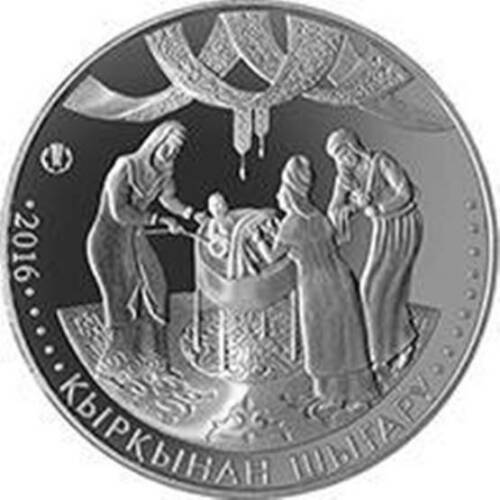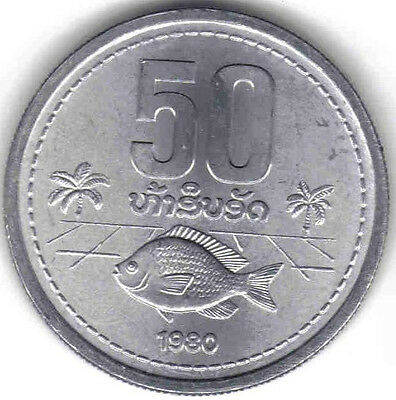-40%
Ancient Thai Money Siam Podduang Ingot Currency 1 Baht Silver Coins Collectible
$ 100.31
- Description
- Size Guide
Description
Ancient Thai Money Siam Podduang Ingot Currency 1 Baht Silver Coins CollectibleGreat valuable old Thai Podduang ingot money for your currency collection.
Period: King Rama I, 1772-1809 AD, Rattanakosin Kingdom.
Package includes: 3 podduang silver ingot money (1 Baht denomination each)
The Story of Pod Duang
Around 700 years ago, the Thais in the Sukhothai Kingdom (the primary capital of Thailand dating from the thirteenth to fifteenth century A.D.) utilized a style of cash which had a one of a kind and extremely irregular shape as the principle medium of trade. This cash had a shape looking like a sort of worm or in Thai, "Duang" and consequently were called "Unit Duang".
Outsiders, then again compared the cash's shape to those of shots utilized as a part of the long time past days and subsequently called the cash "Slug Money". This type of cash assumed a critical part in the Thai money related framework for over 500 years previously it was supplanted by the advanced, level coinage.
The Origin of Pod Duang
It is trusted that Pod Duang started from armlet cash generally utilized as a part of the Kingdom of Nan-Chao. This kingdom was arranged in the north of Sukhothai and held power until the foundation of Sukhothai. Wristband cash comprised of a bar of silver bowed until the point that the closures meet as an arm ornament. In many cases it was sliced and stamped to distinguish the producer and where it was made.
After the fall of Nan-Chao kingdom, the Thai races moved down toward the northern piece of Thailand, for the most part to the Sukhothai kingdom. The suspicion is that the Thais had carried with them wrist trinket cash which was later altered into Pod Duang by lessening its size and squeezing its finishes all the more firmly together. This change was to profit more advantageous to utilize and convey.
Additional confirmation that has a tendency to affirm the connection between the arm ornament cash of Nan-Chao and Pod Duang of Sukhothai is that the fiscal arrangement of Nan-Chao and Sukhothai were indistinguishable, with the categories extending from Tam-Lung, Baht, Salung and Feung.
Shape and Mark
The shapes and signs of Pod Duang are the most critical attributes of the cash. This gives the cash not just exceptional highlights and separates if from all other cash on the planet, however they are likewise utilized as markers to decide the age and the specific time frame to which each Pod Duang has a place.
Case Duang of Sukhothai period have longer legs and along these lines framed a bigger and more extensive opening in the center. They were for the most part made of silver with a cut over the front on the two legs to demonstrate the cash's realness and to test the nature of the silver too. The Kingdom of Sukhothai step by step declined and turned into a vassal province of Ayudhya which was accordingly settled as the capital in 1350 A.D. Case Duang filled in as the principle cash in this Kingdom. It was be that as it may, additionally changed to be more round fit as a fiddle and with shorter legs. The gap between the legs was as yet recognizable yet step by step wound up littler and towards the finish of the period the opening in the long run vanished. The cuts at the legs were additionally littler until the point when they were at long last supplanted by a little curved scratch called "Met Kao San" on one Side of the cash.
Case Duang of Thonburi, the third capital of Thailand from 1767 to 1782 A.D. what's more, Rattanakosin Kingdom, the present capital from 1782 A.D. embraced the fundamental normal for Pod Duang of the late Ayudhya period. They had no opening in the center and the legs turned out to be significantly shorter. The distinction in any case, was that Pod Duang of Thonburi had no curved scratch while that of the Rattanakosin Kingdom reapplied the scratch like those of the Ayudhya Kingdom. The imprints on Pod Duang for the most part comprised of two stamped marks. One check which was constantly put on top was the Dynasty of Kingdom check, the other was the ruler's close to home stamp which was normally stamped in the front part
The exemptions to these markings were clear with Pod Duang of Sukhothai - some of which being discovered bearing no imprints at all while some drag up to 11 marks. This is because of the way that in the Sukhothai time, individuals and dealers were permitted to deliver their own cash. From the Ayudhya Kingdom onwards in any case, the making of Pod Duang was hoarded by the administration and hence made it less demanding to recognize Pod Duang of every period.
Unit Duang of Ayudhaya bore two imprints. The Dynasty stamp is dependably possibly one which resembles a spoked wheel speaking to the "Wheel of Law" of the Buddhist confidence or the characteristic of the Chakra, the weapon of the God Vishnu which is dependably in a type of 8 dabs encompassed by a major dab in the middle. The lord's close to home stamp changed by every ruler remembering his own rule. The imprints incorporated a Conch shell, a Krut or Garuda fledgling, an Elephant and a stay.
pod02The Chakra stamp was as yet utilized as the Dynasty check in the Thonburi Kingdom. Lord Taksin the Great, the organizer and just leader of the Kingdom, received Vajira or the thunderbolt as his own check. It is accepted that the lord's previous name or title before his increase to the honored position was symbolized by the thunderbolt.
The stamp characteristics of Pod Duang of Rattanakosin Kingdom or Bangkok period are less demanding distinguished. The Dynasty stamp, Chakra arrived in a type of a sharp-edged plate which spoke to the Chakri Dynasty. The individual check changed with each authoritative ruler. Lord Rama I received an Unalom which took after a conch shell as his own stamp. The check symbolized the divinity Siva's third eyes or in another definition, a hallowed characteristic of Budhism.
When King Rama II climbed to the position of royalty, he picked the Krut or Garuda fledgling as his own stamp. The stamp was accepted to get from his previous name "Chim" which implies garuda's heaven. Ruler Rama III likewise received his previous name "Tab" (which means château) as his own stamp. In this rule be that as it may, the King likewise issued memorial gold and silver Pod Duang. These Pod Duang bear the Chakra stamp as common yet the individual check was supplanted by a wide range of imprints, for example, garuda in profile, bloom, bee sanctuary, and so on.
Ruler Rama IV's own stamp is the "Mongkut" or Crown which was additionally taken after his previous name. Present day level coinage be that as it may, was presented in this rule and wound up prevalent towards the finish of the rule. As a result, Pod Duang in the rule of King Rama V were created for recognition purposes just and just on two events. One was to honor the incineration of the King's most youthful sister in 1877. This Pod Duang bore the Chakra stamp and Coronet. The other was for the legitimacy making of the King's mom. It arrived in a progression of 6 sizes and 462 pieces. All conveyed the Chakra on top with the characteristic of a Coronet with plate on the front side and Cho Rumphoei at the back.
The utilization of Pod Duang for 6 centuries arrived at an end in the rule of King Rama V. The King considered that Siam should utilize an indistinguishable standard level coinage from different nations with the goal that remote exchange and trade could be produced and more internationalized. Likewise, the making of Pod Duang was performed by hand utilizing gifted skilled workers and was tedious. It was in this way, unfit to encourage the need of the extending economy. In 1904, a declaration was issued to pull back Pod Duang from course.


















